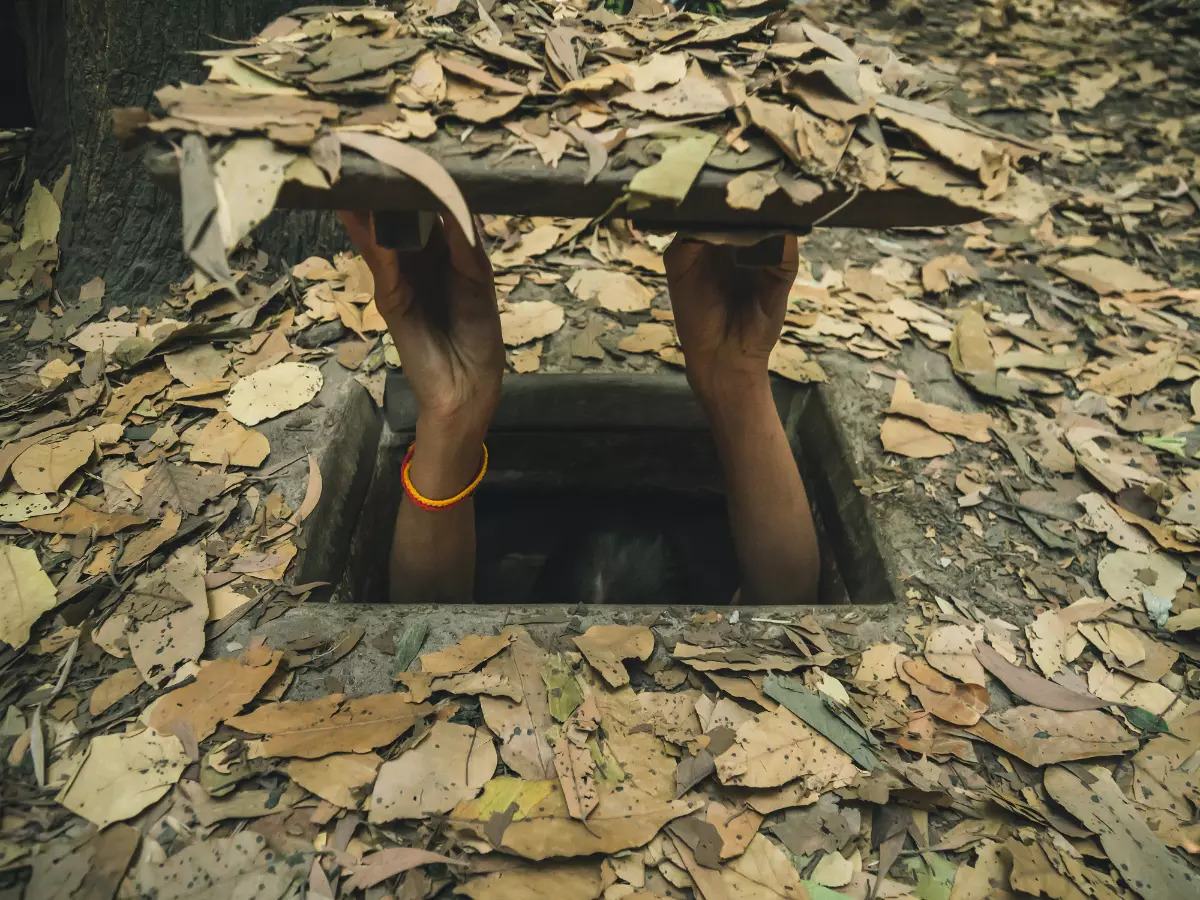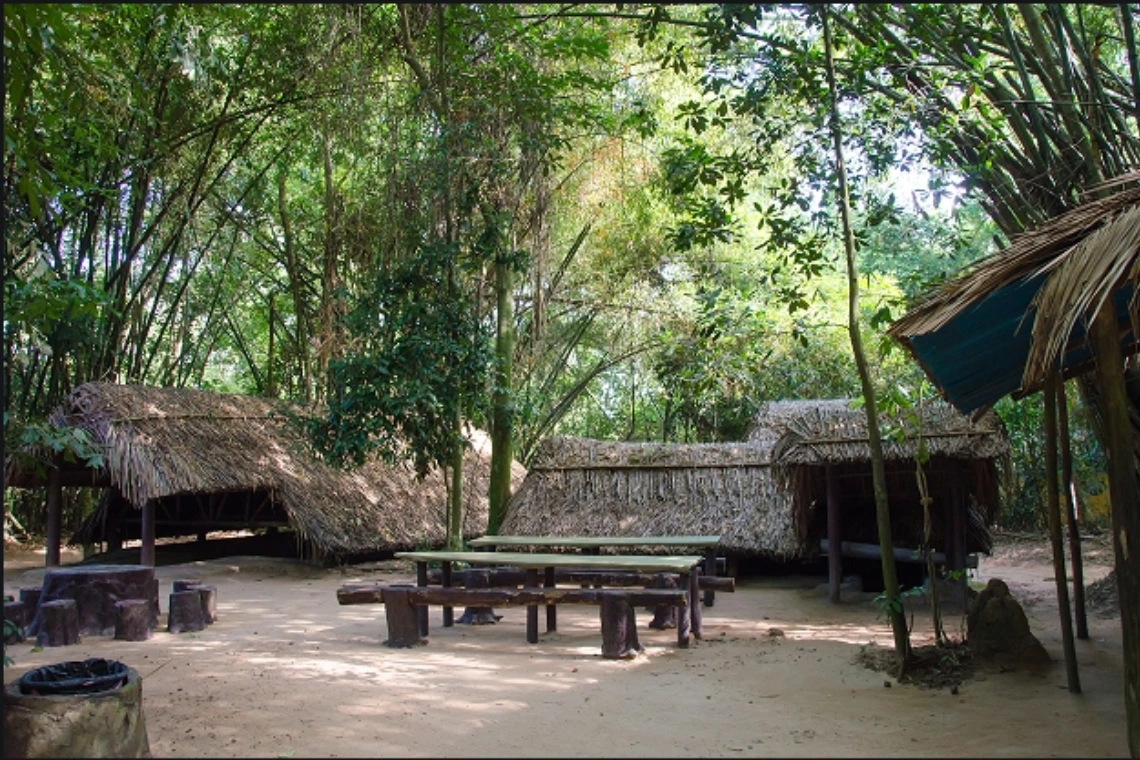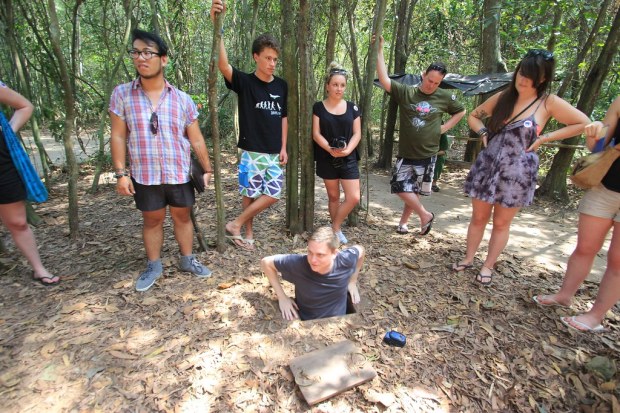Table of Contents
In the annals of human ingenuity and perseverance, what is Cu Chi Tunnels stand as a testament to the indomitable spirit of the Vietnamese people. This intricate network of underground passageways, bunkers, and living quarters, strategically located just 25 kilometers northwest of Ho Chi Minh City, played a pivotal role in the Vietnamese resistance against foreign aggression during the Vietnam War. The Cu Chi Tunnels have become a popular tourist destination, offering visitors a glimpse into the resilience and determination of the Vietnamese people during one of the most tumultuous periods in their history.
History of Cu Chi Tunnels: A Legacy of Fortitude

What is Cu Chi Tunnels have a long and storied history, dating back to the early 1940s when they were initially constructed by the Viet Minh, a resistance movement against French colonial rule. The tunnels served as a strategic base for the Viet Minh, providing shelter from aerial bombardment and a tactical advantage in ambushes against French forces. However, it was during the Vietnam War that the Cu Chi Tunnels gained international recognition for their role in the fight against American forces.
During the Vietnam War, the tunnels were expanded and improved upon by the North Vietnamese Army (NVA) and the Viet Cong (VC), who used them as a base of operations for their guerrilla warfare tactics. The tunnels provided a safe haven for soldiers, as well as a means of transportation and communication between different areas of the battlefield. They also served as storage for weapons, food, and medical supplies.
Purpose and Construction of Cu Chi Tunnels: An Underground Fortress

The Cu Chi Tunnels were meticulously planned and constructed with a specific purpose in mind: to create an underground fortress that would enable the Vietnamese to wage a protracted war against their adversaries. The tunnels were dug entirely by hand, using simple tools such as shovels and pickaxes. The construction was a massive undertaking, with an estimated 250 kilometers of tunnels stretching from the outskirts of Saigon to the Cambodian border.
The tunnels were typically narrow and low, with a height of about 1.2 meters and a width of 0.8 meters, making them difficult for larger enemy soldiers to navigate. They were also designed with multiple levels, ranging from 3 to 10 meters deep, to provide protection against aerial attacks. The entrances to the tunnels were cleverly disguised and booby-trapped to prevent enemy infiltration.
Features and Layout of Cu Chi Tunnels

What is Cu Chi Tunnels were not just a simple underground network of passageways. They were a complex system of living quarters, hospitals, storage areas, and even schools. The tunnels were divided into different sections, each with its own purpose. For example, there were separate areas for cooking, sleeping, and storing weapons. There were also meeting rooms and command centers where military strategies were planned.
One of the most impressive features of the Cu Chi Tunnels is the ventilation system. Despite being underground, the tunnels had a sophisticated ventilation system that provided fresh air and dispersed smoke from cooking and bomb explosions. This was achieved through a series of vents and chimneys strategically placed throughout the tunnel system.
Life in Cu Chi Tunnels during the Vietnam War

Life in the Cu Chi Tunnels during the Vietnam War was harsh and challenging. Soldiers lived in cramped and dark conditions, often for months at a time. The constant threat of enemy attacks and the fear of being discovered added to the already stressful living conditions. However, the soldiers stationed in the tunnels showed remarkable resilience and adaptability, finding ways to make their lives more comfortable.
The soldiers had to be resourceful and creative to survive in the tunnels. They used bamboo and other natural materials to build furniture, cookware, and even weapons. They also had to be extremely cautious when moving around the tunnels, as any noise could give away their location to the enemy.
Significance of Cu Chi Tunnels in the Vietnam War

What is Cu Chi Tunnels played a crucial role in the Vietnam War, serving as a symbol of the Vietnamese people’s determination and resilience in the face of adversity. The tunnels were instrumental in the success of the guerrilla warfare tactics employed by the NVA and VC, who were able to outmaneuver and surprise their American adversaries.
The tunnels also served as a strategic base for the Tet Offensive, a major military campaign launched by the NVA and VC in 1968. This offensive was a turning point in the war, as it showed that the North Vietnamese forces were capable of launching large-scale attacks on American-controlled areas.
Tourism at Cu Chi Tunnels Today

Today, the Cu Chi Tunnels have become a popular tourist destination, attracting visitors from all over the world who are interested in learning about the history and culture of Vietnam. The tunnels have been preserved and turned into a museum, providing a unique opportunity for visitors to experience what life was like for soldiers during the Vietnam War.
Visitors can explore a section of the tunnels, which has been widened and reinforced for safety purposes. They can also see various traps and weapons used by the Vietnamese soldiers, as well as replicas of living quarters and command centers. There is also a shooting range where visitors can try their hand at firing weapons used during the war.
How to Get to Cu Chi Tunnels

The Cu Chi Tunnels are located approximately 70 kilometers from Ho Chi Minh City. The most convenient way to get there is by booking a guided tour, which includes transportation from the city to the tunnels. These tours can be booked through various travel agencies or at your hotel. Alternatively, you can also hire a private car or motorbike to take you there.
Entrance Fees and Opening Hours of Cu Chi Tunnels

The entrance fee for the Cu Chi Tunnels is 110,000 VND (approximately $5 USD) for adults and 55,000 VND (approximately $2.50 USD) for children. The tunnels are open daily from 7:00 AM to 5:00 PM, with the last entry at 4:00 PM. It is recommended to arrive early in the morning to avoid large crowds and the midday heat.
Guided Tours of Cu Chi Tunnels
Guided tours of the Cu Chi Tunnels are available in multiple languages, including English, French, and Chinese. These tours provide visitors with a comprehensive understanding of the history and significance of the tunnels. They also include a visit to nearby attractions such as the Ben Duoc Memorial Temple and the Hoang Cam Kitchen, where visitors can sample traditional Vietnamese dishes.
Tips for Visiting Cu Chi Tunnels
- Wear comfortable shoes and clothing as the tunnels can be narrow and hot.
- Bring insect repellent as the area is known for mosquitoes.
- Be respectful of the historical significance of the site and do not touch any artifacts.
- Listen to your tour guide and follow their instructions for safety purposes.
- Take breaks and stay hydrated, especially during the hot summer months.
Conclusion
What is Cu Chi Tunnels are not just a tourist attraction; they are a symbol of resilience, determination, and perseverance. They serve as a reminder of the sacrifices made by the Vietnamese people during the Vietnam War and the importance of never giving up in the face of adversity. A visit to the Cu Chi Tunnels is a must for anyone interested in learning about the history and culture of Vietnam. It is an experience that will leave a lasting impression and a deeper understanding of the human spirit.